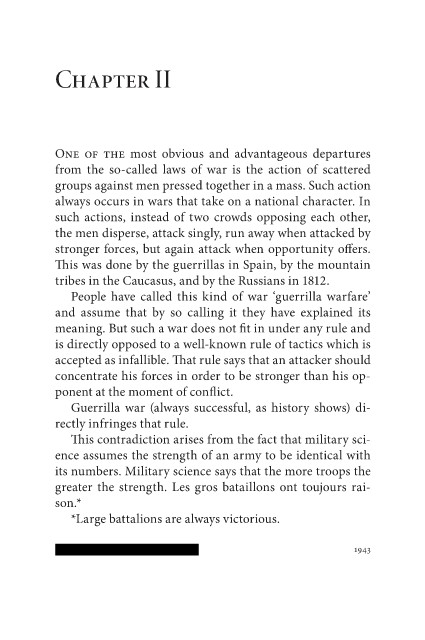Page 1943 - war-and-peace
P. 1943
Chapter II
One of the most obvious and advantageous departures
from the so-called laws of war is the action of scattered
groups against men pressed together in a mass. Such action
always occurs in wars that take on a national character. In
such actions, instead of two crowds opposing each other,
the men disperse, attack singly, run away when attacked by
stronger forces, but again attack when opportunity offers.
This was done by the guerrillas in Spain, by the mountain
tribes in the Caucasus, and by the Russians in 1812.
People have called this kind of war ‘guerrilla warfare’
and assume that by so calling it they have explained its
meaning. But such a war does not fit in under any rule and
is directly opposed to a well-known rule of tactics which is
accepted as infallible. That rule says that an attacker should
concentrate his forces in order to be stronger than his op-
ponent at the moment of conflict.
Guerrilla war (always successful, as history shows) di-
rectly infringes that rule.
This contradiction arises from the fact that military sci-
ence assumes the strength of an army to be identical with
its numbers. Military science says that the more troops the
greater the strength. Les gros bataillons ont toujours rai-
son.*
*Large battalions are always victorious.
1943

